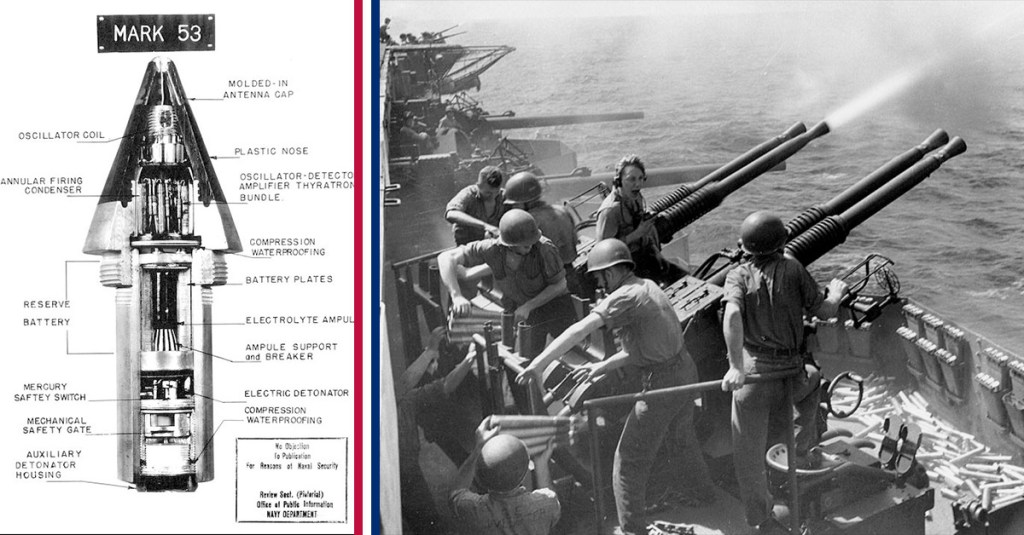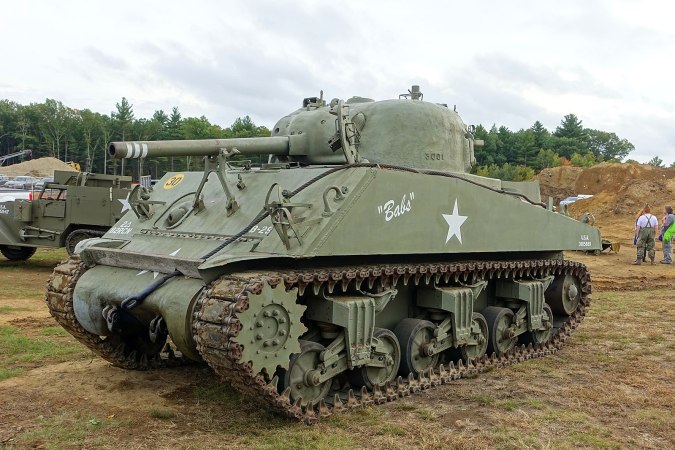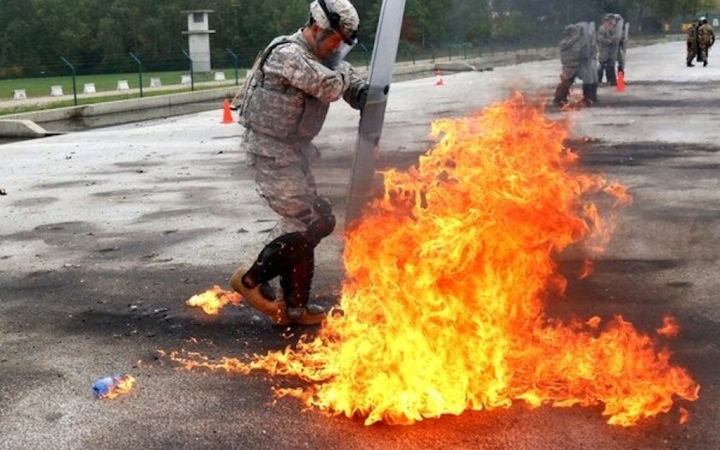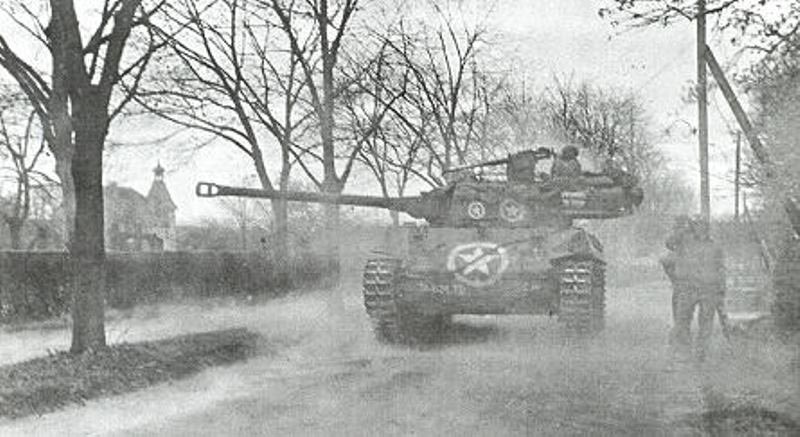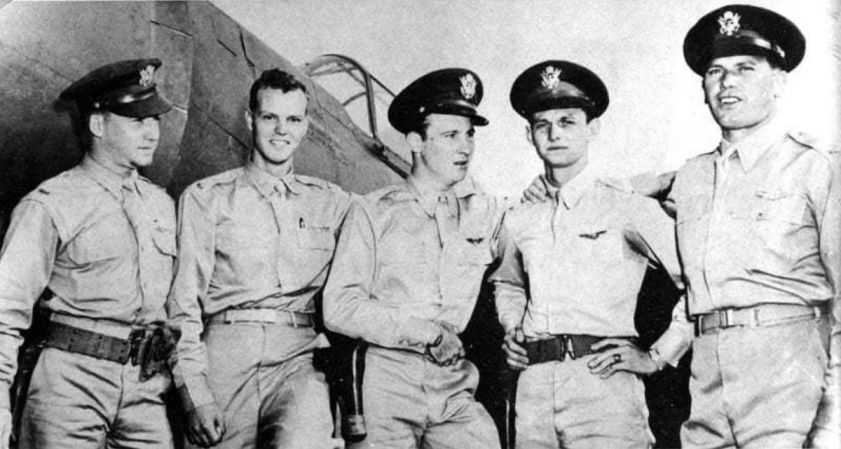Jet engines, air-to-air rockets, drones. World War II was filled with flashy technological breakthroughs that would change warfare, both during that conflict and in wars to follow. But it was one humble piece of equipment that got an early upgrade that may have actually tipped the war in America’s favor: the fuse.
Specifically, impact and timed fuses were switched out for a weapon that had been hypothetical until then: the proximity fuse.

Anti-aircraft guns fire during World War II. Air defenders using timed fuses had to fire a lot of rounds to bring anything down.
(U.S. Army)
Anti-aircraft and other artillery rounds typically consist of an outer shell packed with a large amount of high explosives. These explosives are relatively stable, and require the activation of a fuse to detonate. Before World War II, there were two broad categories of fuses: impact and timed.
Impact fuses, sometimes known as crush fuses, go off when they impact something. A split-second later, this sets off the main explosives in the shell and causes it to explode in a cloud of shrapnel. This is great for hitting armored targets where you need the explosion pressed as closely as possible against the hull.

A U.S. bomber flies through clouds of flak with an engine smoking. While flak and other timed-burst weapons could bring down planes, it typically took entire batteries firing at high rates to actually down anything.
(U.S. Air Force)
But for anti-personnel, anti-aircraft, or just wide-area coverage fire, artillerymen want the round to go off a couple feet or a couple yards above the ground. This allows for a much wider spread of lethal shrapnel. The best way of accomplishing this until 1940 was with a timed fuse. The force of the shell being propelled out of the tube starts a timer in the fuse, and the shell detonates after a set duration.
The fuses could be set to different times, and artillerymen in the fire direction center would do the math to see what time setting was needed for maximum shrapnel burst.
But timed fuses were less than perfect, and small math errors could lead to a round going off too early, allowing the shrapnel to disperse and slow before reaching personnel and planes, or too late, allowing the round to get stuck deep into the dirt before going off — the dirt then absorbs the round’s energy and stops much of the shrapnel.

The Applied Physics Laboratory at Johns Hopkins University succeeded in creating a revolutionary fuse that would tip battles in America’s favor.
So, in 1940, the National Defense Research Committee asked the Carnegie Institution and Johns Hopkins University to complete research on a tricky project, proximity fuses that worked by sending out radio waves and then measuring the time it takes for those waves to bounce back, allowing it to detonate a set distance from an object. This required shrinking down a radio transmitter and receiver until it was small enough to fit in the space allotted for a fuse.
This, in turn, required all sorts of breakthroughs, like shrinking down vacuum tubes and finding ways to cradle all the sensitive electronics when a round is fired out of the tube.
The scientists accepted the challenge and began work in total secrecy. Top-tier talent, like Dr. James Van Allen, the one the “Van Allen radiation belt” is named after, managed to create a working fuse that detonated near its target approximately half the time.
That may not sound like a great rate, but it was actually a bit of a miracle. Air defenders had to fire thousands of rounds on average to bring down any of the fast, single-engine bombers that were becoming more and more popular — and deadly.
So, to suddenly have rounds that would explode near their target half the time, potentially bringing down an enemy plane in just a few dozen or few hundred shots, was a revelation.
This solved a few problems. Ships were now less likely to run out of anti-aircraft ammunition while on long cruises and could suddenly defend themselves much better from concerted bomber attacks.

Sailors man anti-aircraft guns during World War II on the USS Hornet.
(U.S. Navy)
In fact, for the first while after the rounds were deployed, gains were only made at sea because the technology was deemed too sensitive to employ on land where duds could be captured and then reverse-engineered.
The fuses’ combat debut came at Guadalcanal where the USS Helena, one of the first three ships to receive it, fired on a dive bomber heading for its task force. The Helena fired two rounds and the fuses’ first victim burst into flame before plunging to a watery grave.
Two rounds, at a time when thousands used to fail to bring down an enemy plane.
From then on, naval commanders steered ships loaded with the advanced shells into the hearts of oncoming enemy waves, and the fuse was credited with 50 percent of the enemy kills the fleet attained even though only 25 percent of the ammo issued to the fleet had proximity fuses.
That means the fuse was outperforming traditional rounds three to one in routine combat conditions.

A fireball from a kamikaze attack engulfs the USS Columbia during a battle near the Philippines in 1945. The Columbia survived, but 13 crew members were killed.
(U.S. Navy)
It even potentially saved the life of one of its creators, Dr. Van Allen. During the Battle of the Philippine Sea, where U.S. planes and gunners brought down over 500 Japanese planes, Dr. Van Allen was exposed on the USS Washington when it came under kamikaze attack. He later described what happened next:
“I saw at least two or three 5-inch shell bursts in the vicinity of the plane, and then the plane dove into the water several hundred yards short of the ship,” he said. “It was so close I could make out the pilot of the plane.”
The rounds were finally authorized for ground warfare in 1944, and their greatest moment came during the Battle of the Bulge when Gen. George S. Patton ordered them used against a concentration of tank crews and infantry.
The rounds were set to go off approximately 50 feet above the ground. Shrapnel tore through men and light equipment and took entire armored and infantry units out of play due to the sheer number of wounded and killed service members.
“The new shell with the funny fuse is devastating,” General Patton later wrote to the War Department. “I’m glad you all thought of it first.”


